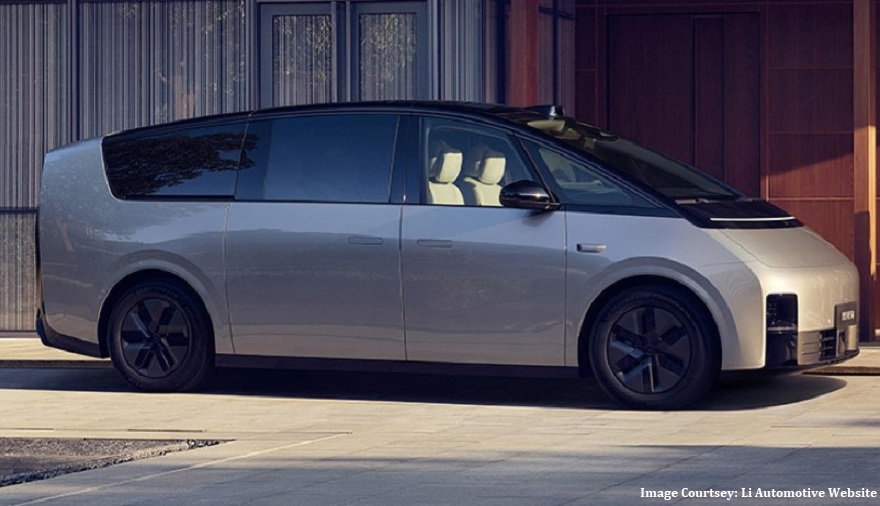
Meet the Li Mega: World's Fastest Charging Electric MPV
The Mega is Li Automotive’s first fully electric minivan that packs in comfort, performance, and charges to 80% in 11 minutes
Introduction
Meet the world’s fastest charging EV, the Li Mega MPV. It boasts a monstrous peak charging speed of 521kW, with an average rate of 400kW. This impressive charging performance is credited to its 800V architecture and CATL’s Kirin 3.0 cell-to-pack cells, which feature a module-less battery pack. Unlike traditional EVs, these cells are part of the chassis, the Mega MPV employs this distinct battery pack design.
CATL pioneered the cell-to-pack battery packs, preceding BYD's Blade Cell batteries. Li Automotive, a new Chinese car manufacturer founded in 2015 by Xiang Li. Interestingly, before establishing his own company, Li was offered to be a co-founder which he refused because of the potential conflicting visions the two founders would have for the brand. Instead, Li started his own company and focused on building range extending EVs. Unlike a regular hybrid, a range-extending system uses the IC engine to power a generator that charges a small battery pack. The electric motor then draws power from this battery pack to drive the car. Stay tuned for a dedicated on how a range extending system works.
Unlike its archrival Nio, which focuses on building fully battery electric vehicles, Li Automotive recognized the need to address range anxiety and charging concerns for prospective buyers. However, with the Mega MPV, Li Automotive aims to go fully electric. It was launched on March 1, 2024, priced at 559,800 Yuan, or $77,800, and began going into customers’ hands from March 11, 2024. Here are some benchmarks it has set.
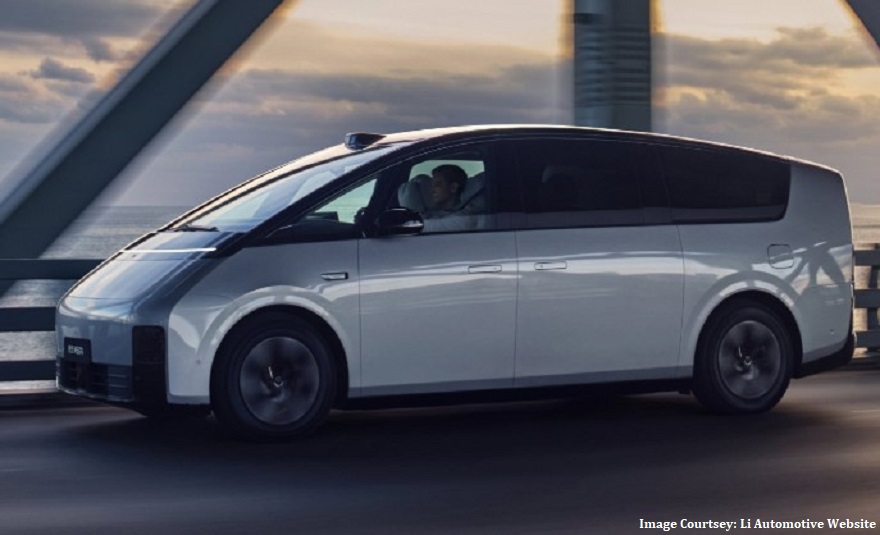
Mega Side Profile Has a Slopping Roof Line and Flush Door Handles1
Battery Pack, Range, Charging, and Performance
Starting with the first benchmark, the Mega MPV uses a massive 102.7kWh NMC celled battery pack with 100kWh of usable capacity, leaving a small buffer. This battery pack can charge from 10-80% SoC in just 11 minutes with a peak rate of 521kW, making it the fastest charging electric vehicle in the world. This charging rate is even higher than the Hyundai Ioniq 5 and Kia EV6's 350kW.
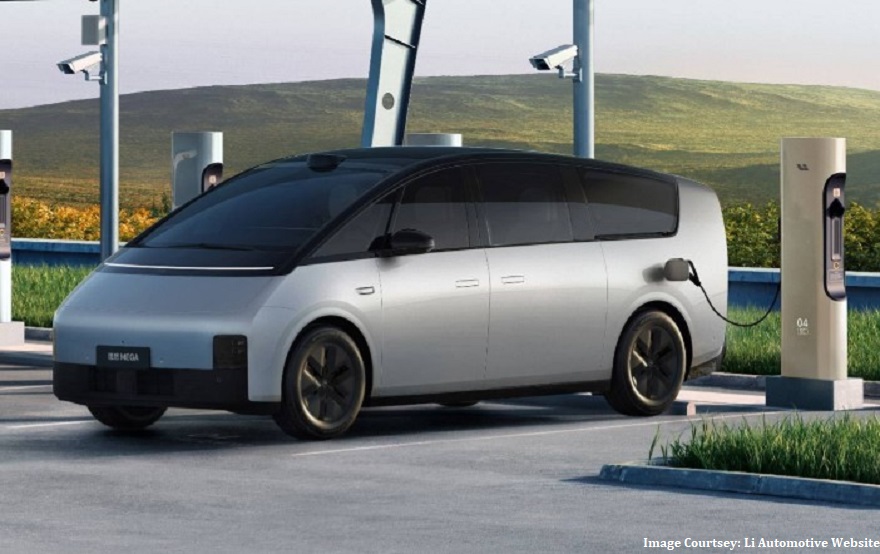
Mega can Charge at 521kW Peak with Average of 400kW2
Similar to Tesla, Li Automotive is building its own DC fast charging network in a 3+1 format, with three 250kW and one 480kW charger. This infrastructure allows owners to leverage quicker charging times. Currently, Li Automotive has installed 343 chargers throughout China and plans to increase that number to 10,000 by the end of 2025. This undertaking is quite staggering, considering China already has over 2.2 million chargers installed, the highest of all countries. Li Automotive could have leveraged the already installed chargers to avoid the massive costs associated with building its own charging infrastructure. Despite the costs, the company wishes to build its own charging infrastructure to let owners leverage faster charging speeds.
As for range, the Mega MPV can travel 710km (442 miles) on the CLTC (Chinese Light-Duty Electric Vehicle Test Cycle) protocol and 575km (358 miles) on the WLTC (Worldwide harmonized Light-duty vehicles Test Cycle) protocol. This range is decent for a 2.7-ton electric minivan. The 350 miles of range can be attributed to its extremely slippery aerodynamic shape, with a Cd value of 0.215. This value is lower than that of a Tesla Model 3 and BYD Seal, which both have a Cd value of 0.219. This aerodynamic efficiency is achieved through a combination of elements, such as a bullet train-like sleek front, flush door handles, a narrower rear three-quarters compared to the front, and a flat rear.
The Mega MPV's performance is equally impressive, with the 0-100 (0-60mph) dash completed in just 5.5 seconds. The drivetrain consists of a dual motor setup, with a motor on each axle. The motor on the front axle has an asynchronous 155kW induction motor, while the rear axle has a 245kW permanent magnet synchronous motor. The combined power output is 400kW (536hp) and 542Nm of peak torque. As a family car, the Mega MPV also prioritizes comfort, featuring air suspension to ensure a smooth ride.
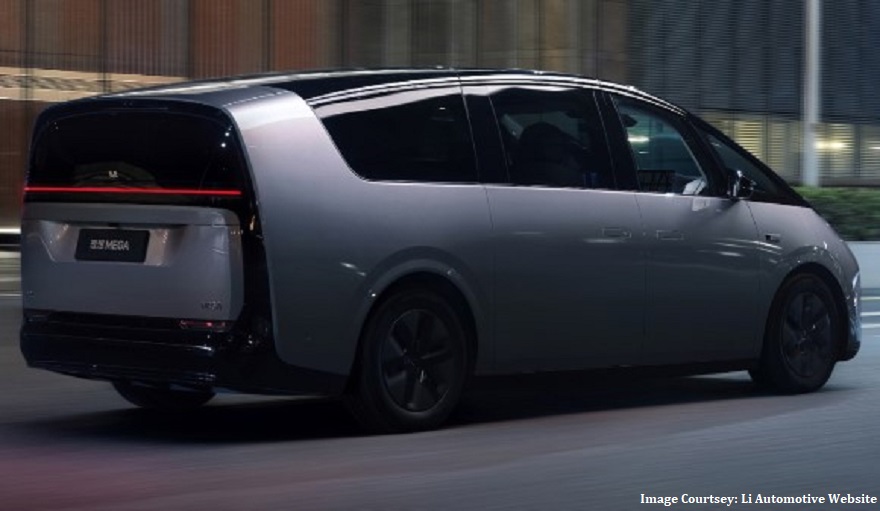
Mega's Flat Rear Profile Helps Enhance its Aerodynamics3
The Mega MPV is a large vehicle, measuring 5350mm long, 1965mm wide, and 1850mm tall. To put this into perspective, it is longer than Mercedes' full-size SUV, the GLS, by 141mm. The wheelbase is also longer than the GLS's by 165mm, resulting in a very roomy cabin.
Interior
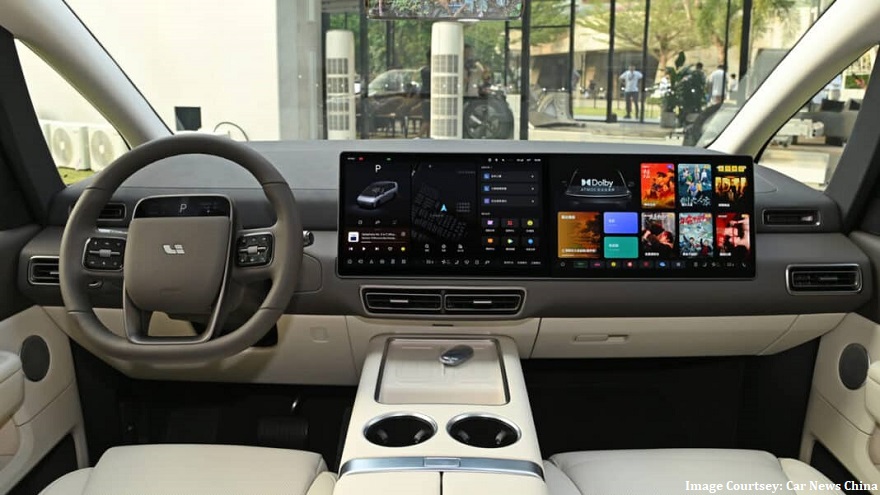
Central Dashboard with Two 15.6" Screens4
Upon stepping into the plush and roomy cabin, you are greeted with two massive 15.6” OLED screens, one above the central console and one on the passenger side. Both screens run on Qualcomm’s Snapdragon 8295P chips. There is also a tiny screen on the wheel for the driver, making a total of three screens at the front. In addition, there is an augmented reality HUD (heads up display) with a neat party trick: it can display the blind spot monitoring camera on the HUD, making it extremely convenient.
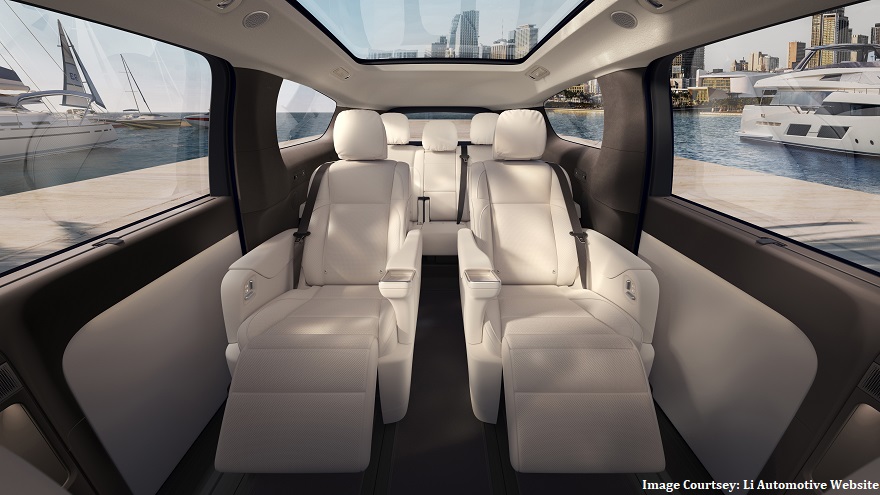
Second Row Captain Seats5
To ensure a very quiet cabin, the Li Auto Mega features double-glazed glass all around, effectively filtering out exterior noises. The second row offers captain chairs that pamper occupants with ample space and sumptuous seats featuring heating and ventilation all the way down to the leg rest. Each chair has its own dedicated inductive charging pad. A larger roof-mounted 17” screen is available for rear passengers, operable through gestures and voice commands. To further enhance the in-cabin experience, the Li Auto Mega boasts a 21-speaker, 2150W music system with Dolby Atmos surround sound.
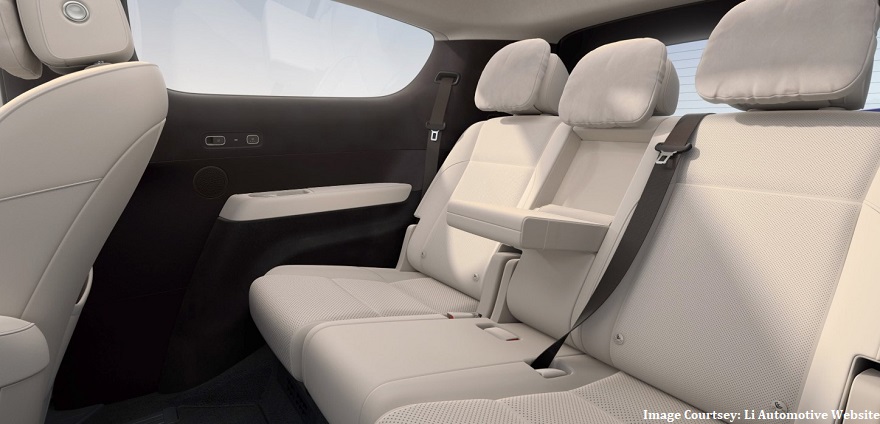
Mega's Third Row6
The second row of seats also includes a refrigerator to cool items and fold-out tables. There is some space between the captain seats to access the third-row bench, which is heated and electrically reclines. The third row is spacious enough for adults to travel on long journeys, which is extremely rare in three-row large vehicles.
Tech
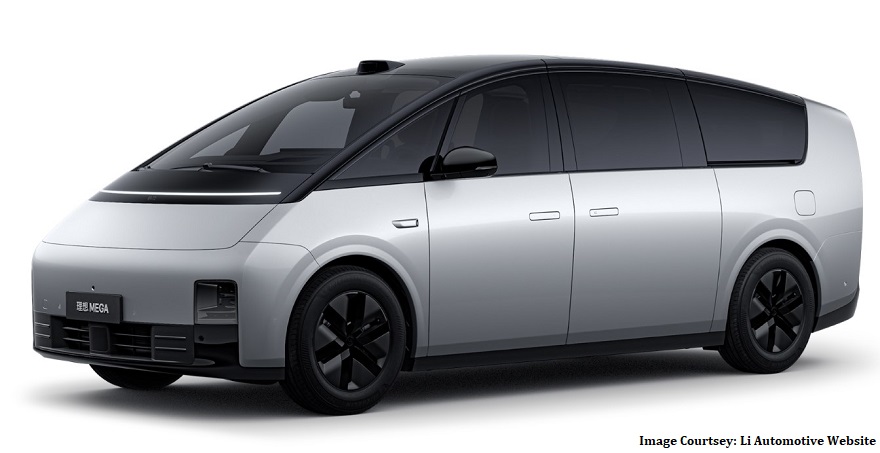
Lidar Unit above the Windscreen7
The Mega MPV comes equipped with an advanced driving assistance system called AD Max, which is analogous to Tesla Autopilot. It uses two Nvidia Orin-X chips to provide a computing processing power of 508 TOPS (Tera Operations per Second). This enables the Mega MPV to process data from a host of LiDAR, 11 cameras, 12 ultrasonic sensors, and a millimeter wave radar. These chips are vital for data processing and perform complex calculations to understand the vehicle's surroundings, supporting autonomous driving tasks such as object detection and path planning. It is this hardware that enables the Mega MPV to support Navigation on Autopilot, allowing the vehicle to navigate through urban traffic and on highways autonomously. However, it is not meant to be driven without the driver's attention just yet.
Expansion and Future
As for international market introductions, the timelines are still under wraps. Li Automotive has plans to expand into the Middle East and North Africa with its range-extending hybrid, the L9 SUV. However, there are no specific timelines for when the Mega MPV will be introduced in overseas markets. When it does, it could be a serious competitor to vehicles like the Mercedes V-Class, Toyota Velfire and Alphard, and the Lexus LM, due to its performance, back seat comfort, tech feast, and charging capabilities. This combination could make the Mega MPV an extremely value-for-money product if priced right. More importantly, is this the EV we have been waiting for?
Image Source
1,2,3,6, & 7- Li Automotive Website
For any inquiries or suggestions regarding the content, please feel free to reach out to us at jash@evlane.net






March 15, 2024
Category: